Creating an intentional home with Rachel Vinciguerra, creator of Time and Tide.
#02. INSIDER interview exploring home as a place of nurture, creativity and an anchor to our surroundings as the seasons turn.
I’m Lyndsay, mother, creative and storyteller with a background in interiors PR. Story & Thread. is a weekly letter exploring the intersection of creativity, mothering and the living world, with a home and a garden at the heart...
Please feel free to share parts of this newsletter that connect with you — here on Substack, on social media or I would love you to send it on to someone special that you think would enjoy reading it.
Hi everyone
How is your week going?
The recent warmth has felt (mostly) welcome but somewhere in my body it feels as though I should be wrapping up and turning inward. The heat here seems to have been gradually breaking over the last couple of days, allowing me to think about reaching out to touch autumn in all its fading fullness. In recent days, I have found myself being drawn to the energy of clarifying, shedding and distillation. I felt it first in the garden, where the plants and flowers are shaded with rust and need cutting back — and it seems to be seeping into thoughts about how I use my precious minutes of time in solitude.
I am excited to reintroduce the INSIDER series of interviews, now with a renewed focus on our homes as places that reflect the way we live inwardly; that express ourselves creatively and that also anchor us to our surroundings by paying attention to the seasons. You can read the first in the new series about Katie Robinson, architect and interiors lover creating an intentional home here.
For the second interview in this series, I am delighted to introduce you to
, writer, yoga teacher and humanitarian. I was drawn to Rachel’s writing in her publication Time and Tide — a newsletter about slowing down and seeking magic within the cycles of life.I loved speaking to Rachel about her home — a place of deeply immersed in its surroundings that reflects the lives of its inhabitants, their roots and their dreams for the future…
Describe who you are and what you do.
My name is Rachel. I’m a writer, yoga teacher, cancer survivor, and during my days, I lead a network of nonprofit leaders across the U.S. welcoming refugees and immigrants.
Where is home?
Just east of Pittsburgh, Pennsylvania in the U.S.
I am fascinated by your work helping refugees to settle in new neighbourhoods, what are the tools you use to build community and belonging?
We did a study in 2019 with both refugees and people from host communities to understand a little about how belonging is built. One of the main ways belonging and community are built is through meaningful personal interactions. It takes just one interaction with someone who may be different from you to start to shift perceptions, reduce prejudice, and increase inclusivity. One example is through shared meals — 23% of refugees shared meals monthly with U.S. families before they were involved with a local nonprofit compared to 71% after. It’s through an outing to the zoo with kids, cooking together, practicing a new language.
Something I find really interesting and important is that it’s not just refugees who may be isolated, but also volunteers from host communities. Most Americans who volunteer with nonprofits supporting refugees are highly educated with higher income and tend to be really siloed. But after being involved in grassroots nonprofits working with refugees, their social connections become more rich and diverse too. Nurturing relationships with people who are different from us, where everyone can show up as their full selves, builds a sense of belonging for everyone.
Why did you start your Substack publication Time and Tide?
It’s important for me as a writer to be a part of a larger writing community and to push myself to share my work and I love
for both of those reasons.As for Time and Tide specifically, I’m a recovering perfectionist. I have a tendency to get caught up with the frenetic pace of the world. For a lot of my life (and even now) it served me well—Student Humanitarian Award, Pittsburgh 30 Under 30, leading the The Hello Neighbor Network fuelled the “I don’t know how you do it” addiction. For a lot of my life it has also made me sick—physically, mentally, emotionally.
At 29, I was diagnosed with Hodgkin’s Lymphoma cancer. Before my 30th birthday, I underwent six months of chemo in my own winter that mirrored the natural season. It was a sudden and important lesson in listening to my body and just listening in general.
So I created Time and Tide as a newsletter for people exhausted by the imposed pace of things, seeking magic and meaning in the cycles and seasons of life.
Describe your home.
We live in a small house just east of the city of Pittsburgh. The back of the house faces a sloping hill filled with trees and a coop with chickens we co-parent with our neighbors. That’s my home: a place my dad affectionately named ‘Chicken Hollow’.
How do you feel in your home?
I drive about 10 minutes east of my work in the city to get home and as I drive up the hill it gets progressively more green, more birds, more sky. My home makes me feel calm and connected, especially to our native environment.
How does your home respond to your needs?
We’ve been pretty intentional about making small changes in our home that can help meet our needs. We have my Nonno and Nonna’s former table in our dining room. My Nonno built inserts for the table so it can be expanded to fit a large family and we can pull it out when we host guests.
In one of the greatest tests of our marriage, my husband and I also assembled a Murphy bed in our upstairs room so it could serve as both a guest room and his office.
We try not to be too married to our home as it is, but to think about what would serve us in each season. And that’s how the outside landscape has evolved too.
How did the health challenges that you and your husband have faced change your relationship with home?
At the end of June in 2021, my husband ran over his foot with the lawn mower. He was confined to the first floor of our home for a couple of months and unable to move much while he healed. We created a makeshift bathroom on the first level and a tent and shower outside the door since he couldn’t climb the stairs. I removed all the rugs so his knee scooter could traverse the rooms — thank god our house is open-concept! And the following summer (partly out of spite) we got rid of all of the grass on the hill where he was injured and replaced it with a native wildflower meadow. During his injury, I was hyper-mobile, moving things around the house, installing the air conditioner, doing all of the cooking, it was frenetic.
Later that fall, our situation was reversed and I was strictly confined to our home during the six months I went through chemo treatments. It happened to be in the middle of COVID and my husband was away at university. I spent more time in the bedroom and in my little spot on the right side of the couch and less in the kitchen because I was often too weak to cook. I couldn’t take very long walks because I would get winded. But my garden and a few blocks around the neighborhood became a small sanctuary.
I think about Emily Dickinson often and how she created such a vibrant inner world within the edges of her family’s home and gardens. I felt that way too a lot of the time.
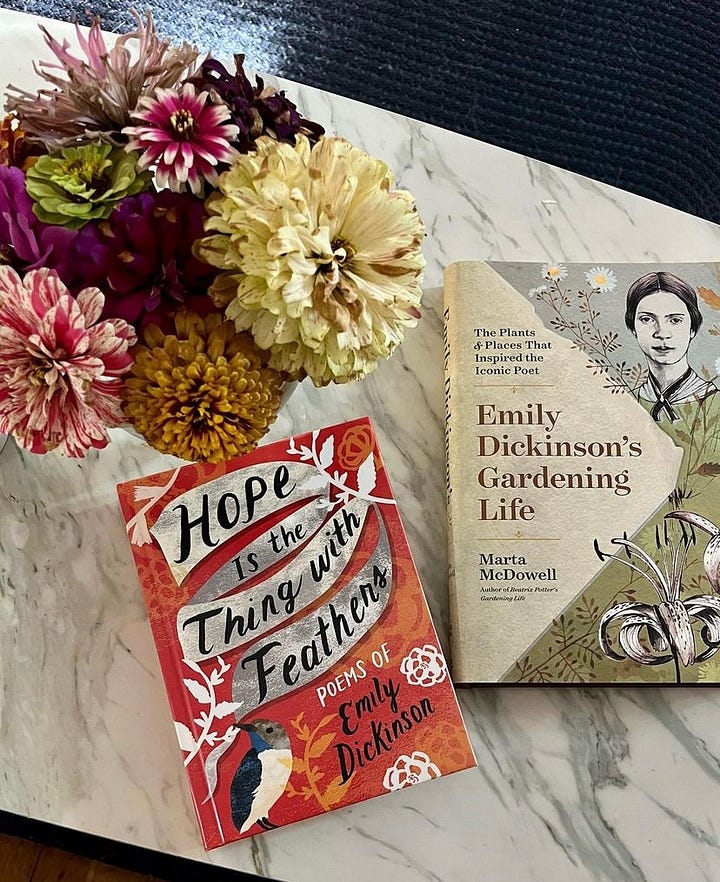
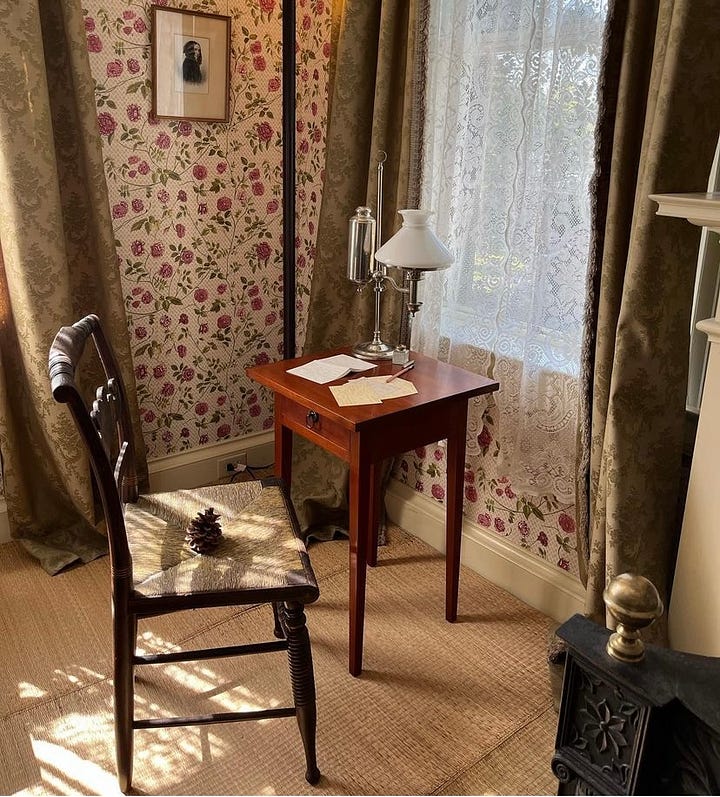
The most meaningful part of my home during that season for me was the backyard. I remember when my hair started falling out, I asked my neighbor to shave my head and that’s where I wanted to be. Looking out at the trees losing their leaves at the same time. I have never felt so connected to nature as I did during that time and specifically with the trees in my own backyard.
My husband and I also got married under those trees in a small, intimate ceremony a couple of months ago. The backyard is a special place for us.
How do you bring intention and meaning to your home?
My home is such a reminder of both where I come from and where I’m going.
I have big charts on the walls of my living room with my dad, uncle, and Nonno’s handwriting. They sailed for many years. A painting by my grandmother of my sister, my cousin, and I as kids on the beach. That whole room is an imprint of the Atlantic ocean: blue carpets, buoys, sailboat cleats to hang things, and a really beautiful metal-work of a mermaid above the mantel. My husband is from Haiti and it was made by one of the men he grew up with. We both grew up on a coast and living in Pittsburgh which does not have an ocean (though it has three beautiful rivers), our living room space is a comforting reminder of where we both came from.
One of the things that I find really meaningful about our home is that so much is repurposed and so much of it was created by family and friends. We love to give furniture, art, and other pieces new life. It’s more sustainable and cheaper too which doesn’t hurt.
Where do you feel most creative at home?
Wherever I can be close to nature, whether that’s on our back patio that we set up last year or upstairs where I have a view of the trees in every season.
Where do you feel most nourished?
I have a yoga room/library on the second floor. It’s the smallest room of the house. I painted it rum butter orange (isn’t that the best name for a paint color?) and filled it with things that bring me peace.
My candles and incense are on a table that came from my sister’s boyfriend’s home. She repurposed it and added a quote from
, “It was my life - like all lives, mysterious and irrevocable and sacred. So very close, so very present, so very belonging to me. How wild it was, to let it be.”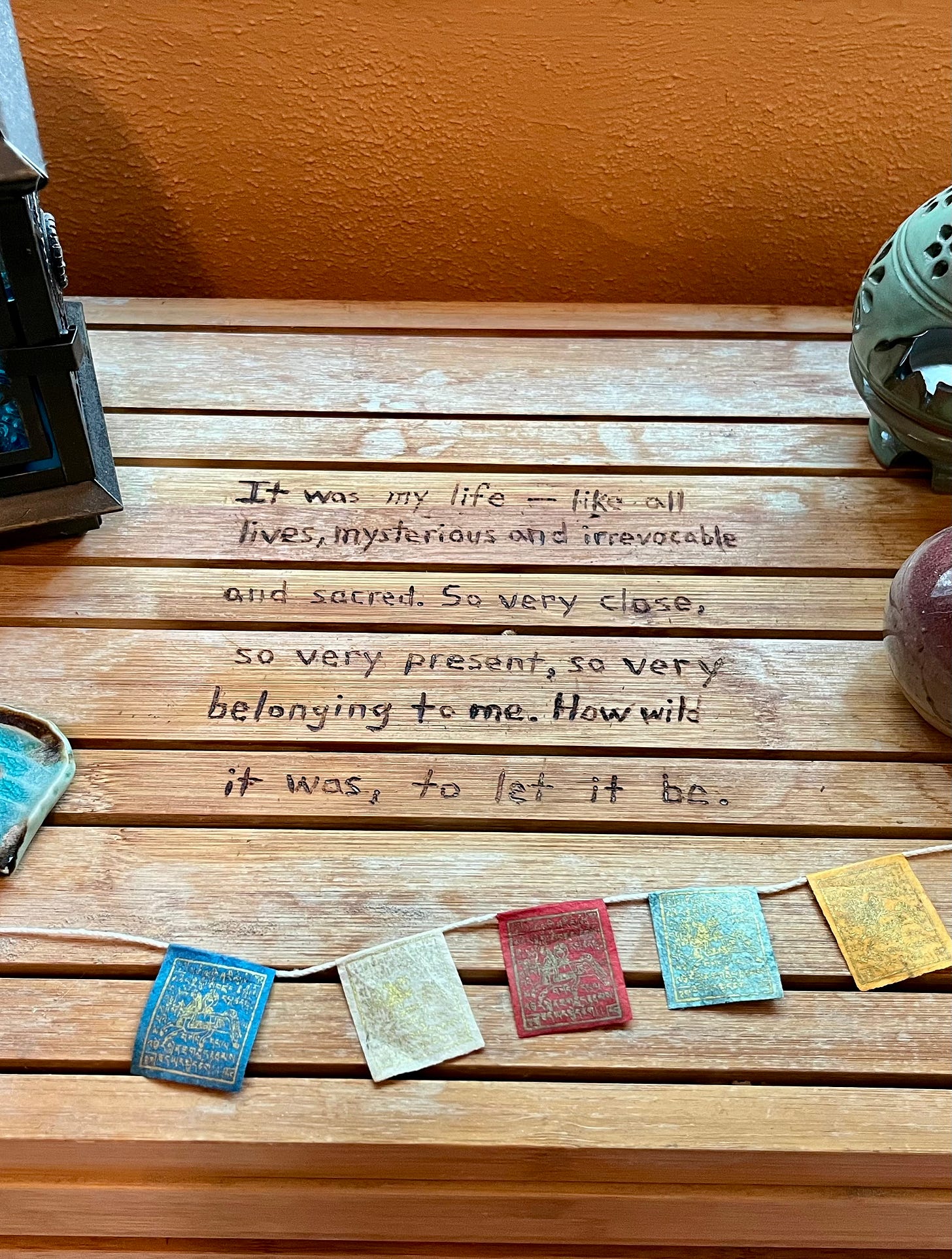
How do you pay attention to the seasons within your home?
I have a box in the basement for each season. In the summer, I hang a wooden whale on the front door and a combination of flowers. In the fall, I have an orange and eucalyptus wreath. Winter, all of the Christmas trappings. But my favorite way to honor each season is to bring the outside in.
We always go pumpkin picking in the fall and I’ll put little pumpkins and gourds all over the place (my cat, Zèb, loves to knock them down!). In the spring and summer we’ll bring in fresh flowers from our garden or the farmer’s market.
You mention transforming the landscape around your home, how is this unfolding?
When we moved into the house in 2019, the seller told me that she couldn’t get anything to grow in the garden. So year after year, I planted more and more and the ground has become really fertile. A couple of years ago, the Audubon Society was identifying neighborhoods in the city that were lacking native plant species and starting to lose some of the biodiversity that’s so integral to our environment.
My neighborhood was among those identified and I signed up to transform the landscape into a backyard habitat. Someone came by my house and helped recommend native plants that would grow in various parts of our yard. My husband and I got some plants for free, purchased some others, and got a wildflower packet of native seeds that we scattered on the hillside in place of the grass.
It’s night and day between how it looked when we first moved in. And it’s been magical to see the wildlife start to return — fireflies, butterflies, bees, birds. There’s a whole world in our garden and we get to be a part of it by stewarding our own land.
Is your home complete or do you have any further plans?
We have a million ideas. We’re hoping to start a family soon and that will shift how we use the space quite a bit too.
We like to dream and discuss — a renovation to transform the garage into a suite for guests, a more modern bathroom, more garden cages — but we also try to stay connected with how content we feel in our home as it is now. This was a paradox I learned a lot about during my cancer treatments — how to savor the present and also hope and plan for the future.
If you could live anywhere in the world, where would it be?
Both my husband and I would like to live abroad again. We’ve talked the most about Italy — where we could have access to fresh food, return to where my family came from a couple generations ago, and my husband can go to the football games he loves.
We also hope to spend a year sailing an inner coastal waterway in the U.S. after we start our family. But we love our current home so much, we don’t have a particular timeline in mind. And the lesson I have to learn and relearn is that despite our best plans, at the end of the day we’ll just have to wait and see what happens.
You can explore more of Rachel’s writing via her publication Time and Tide, Instagram and her website.
I’d love to hear if you have been inspired by Rachel’s intentions to create a meaningful home, and how you feel in your own home…
Where do you feel most nourished?
Does your home feel rooted in its surroundings?
Thank you for reading and I really look forward to your thoughts, hope we can chat more in the comments.










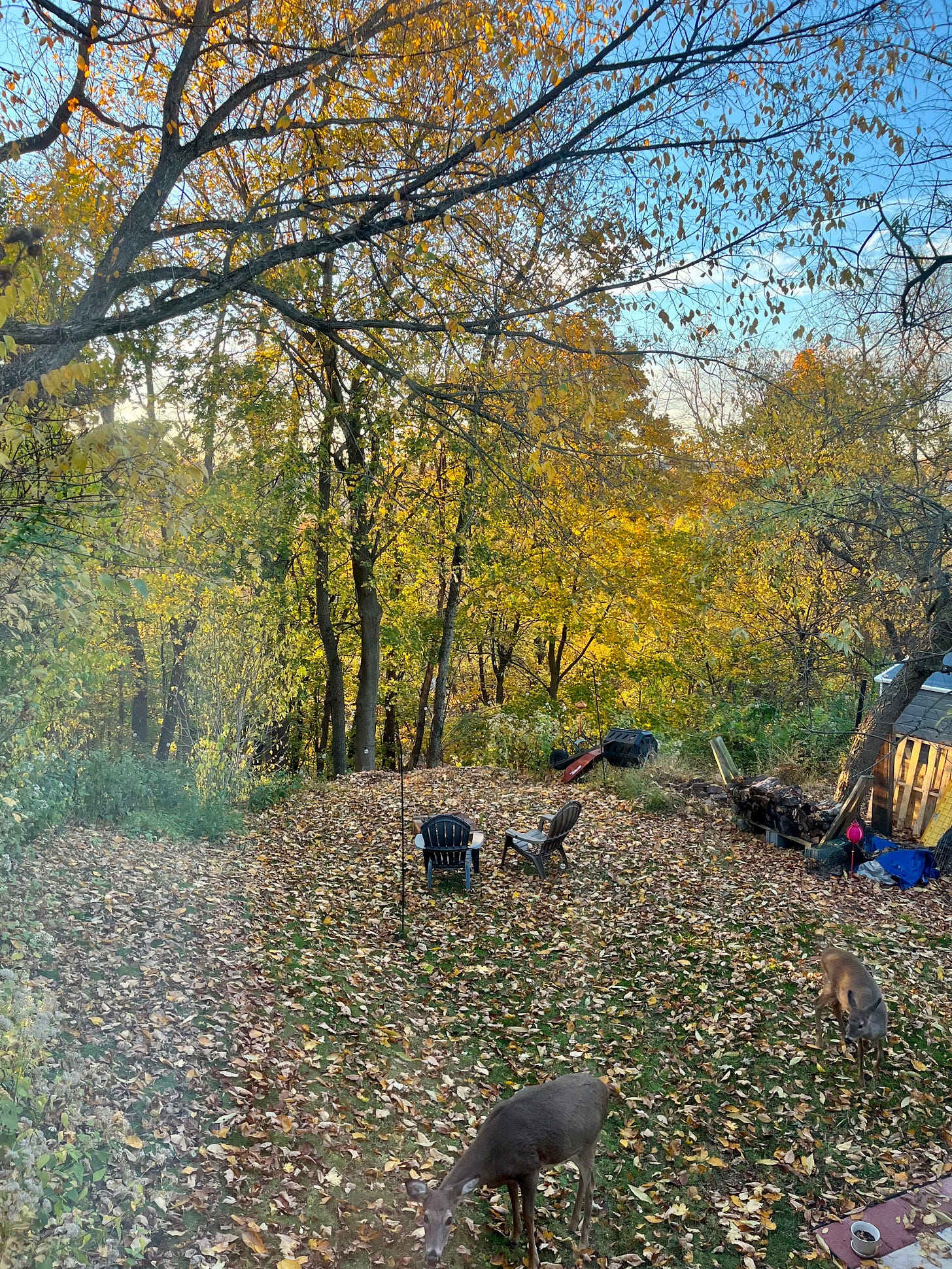


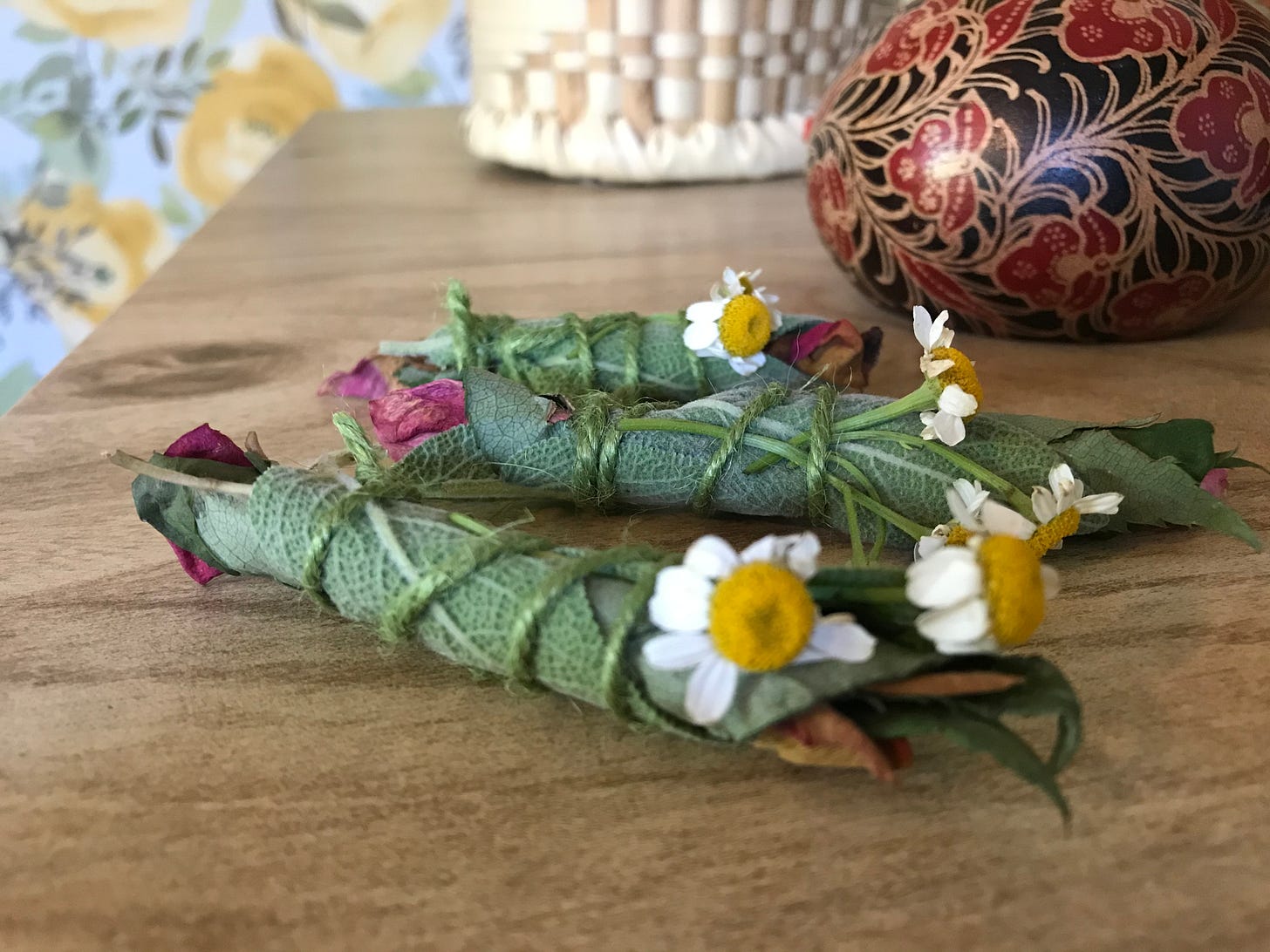


Thank you, Lyndsay and Rachel. So much goodness here. As someone who works with refugees on the other side of things, overseas, I really appreciate your work, Rachel (and think your thoughts on home are interesting to consider within the context of those who are displaced). Thanks for sharing. I'll definitely be checking out Hello Neighbor Network.
I felt truly immersed in Rachel's world through this interview, Lyndsay. Such rich questions and evocative responses.
Do I feel my home is rooted in its surroundings? Absolutely. We had two weeping ashes at the front of our house which had to be felled recently because they'd been destroyed by ash dieback. It was incredibly sad to see them go, and we sat with the stumps to painstakingly count the rings to see how long they'd stood sentinel on the front lawn. Over 160 years. I then took to my pile of documents to work out who lived here at the time of their planting and was able to tell a story around the family I knew lived here in the 1860s. It made me feel connected to them and this house in such a profound way.
The trees are still with us now, branches drying for firewood and trunks repurposed as benches to sit on. And we have plans to plant cherry trees in their place. The cycle of life!